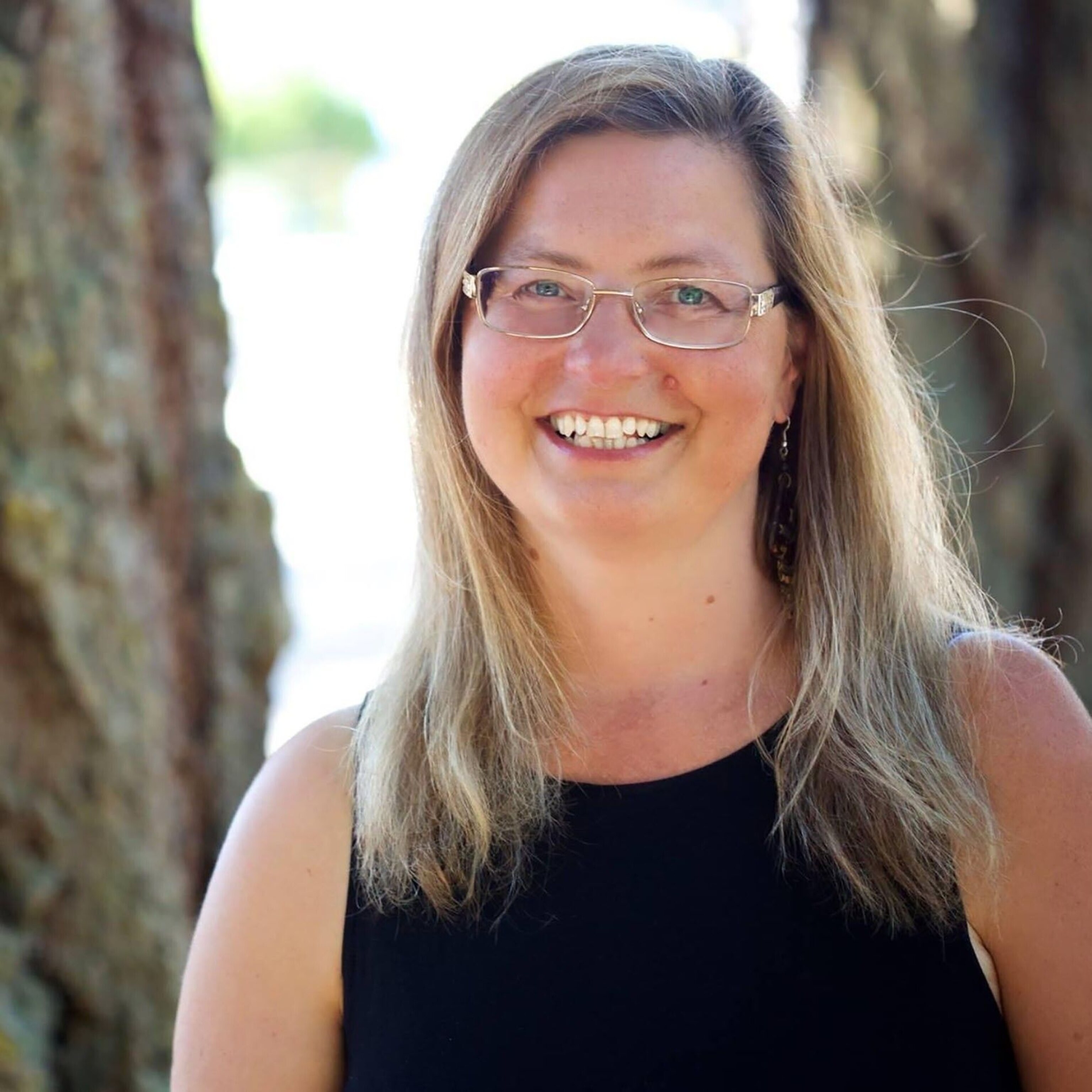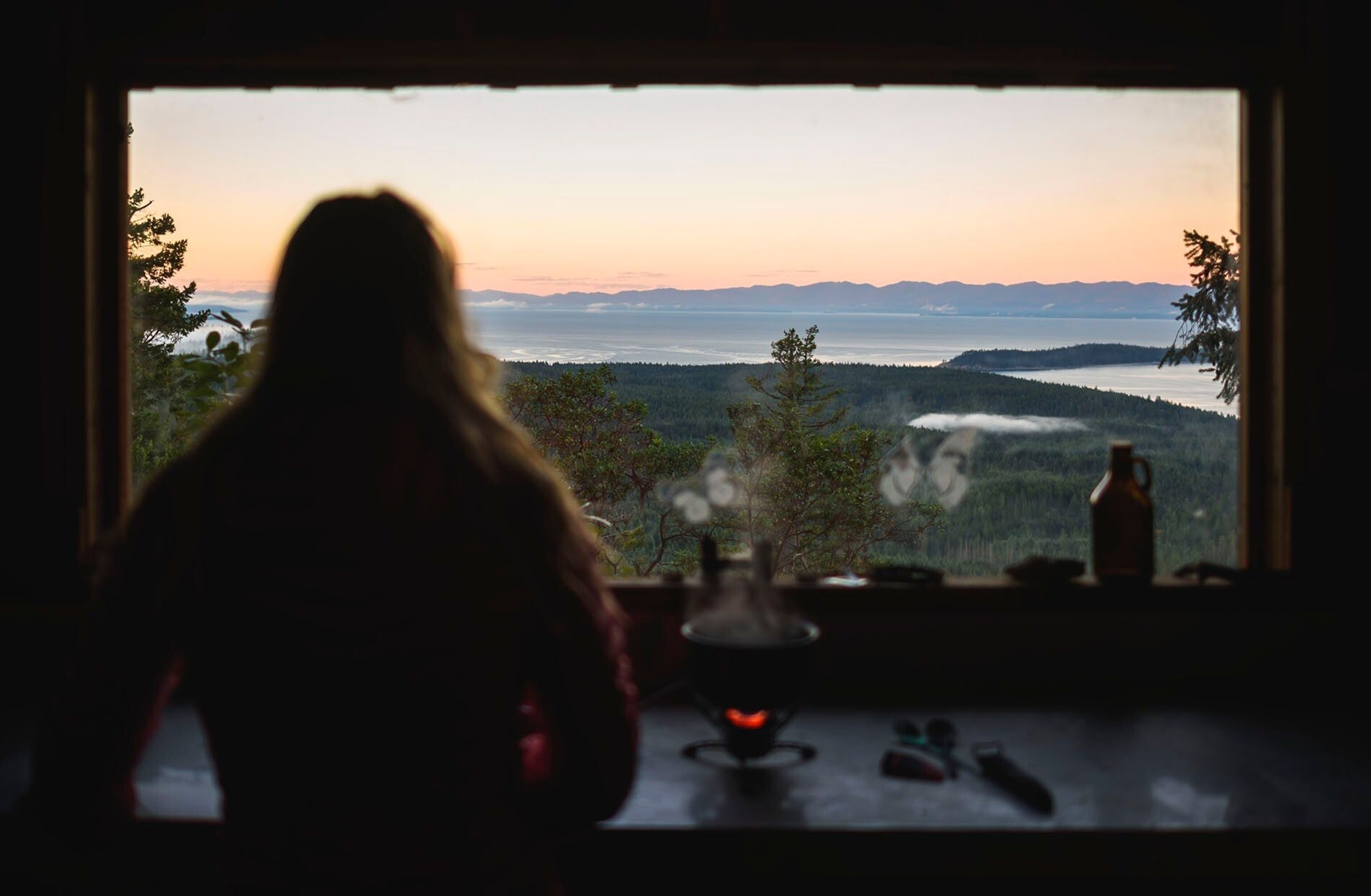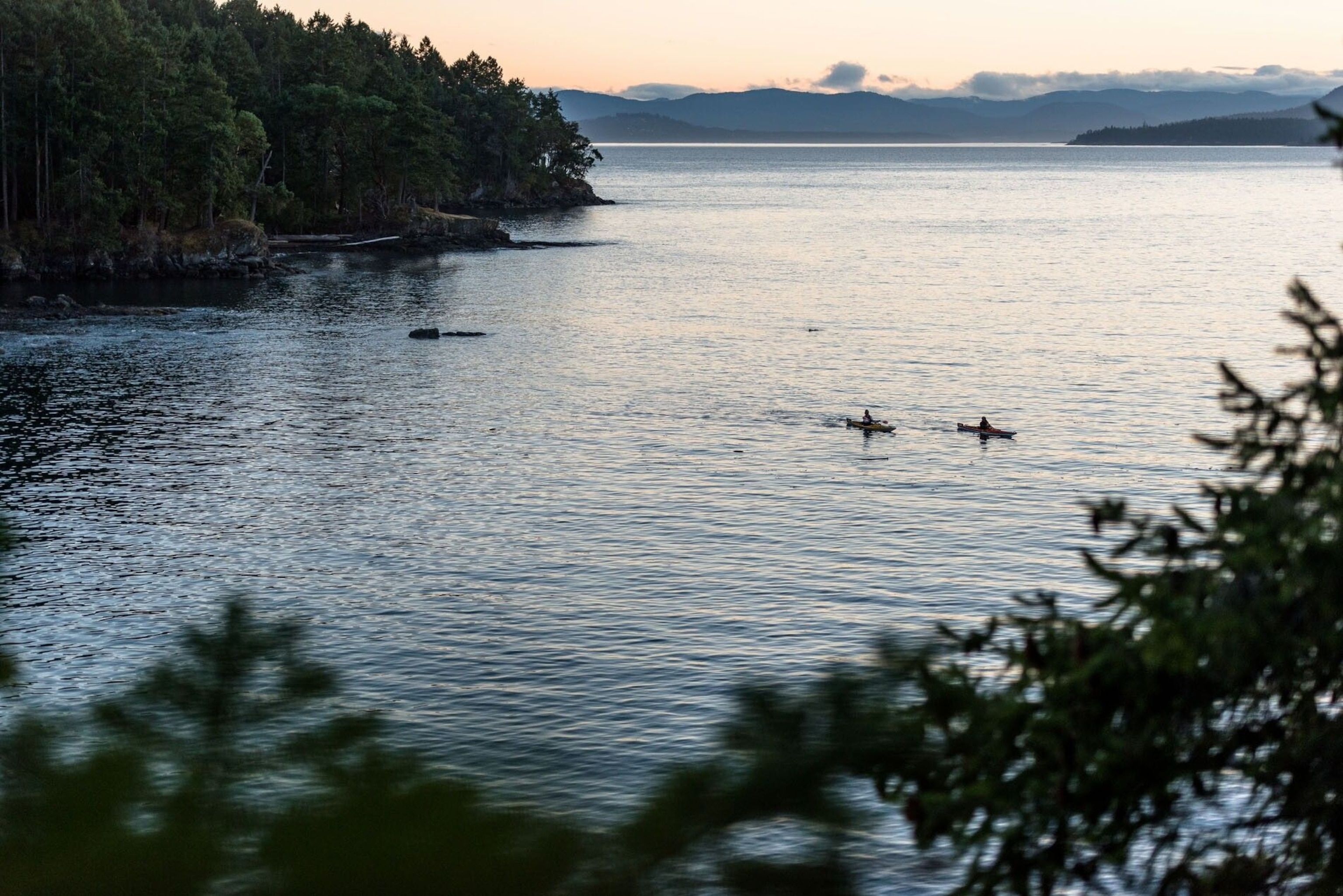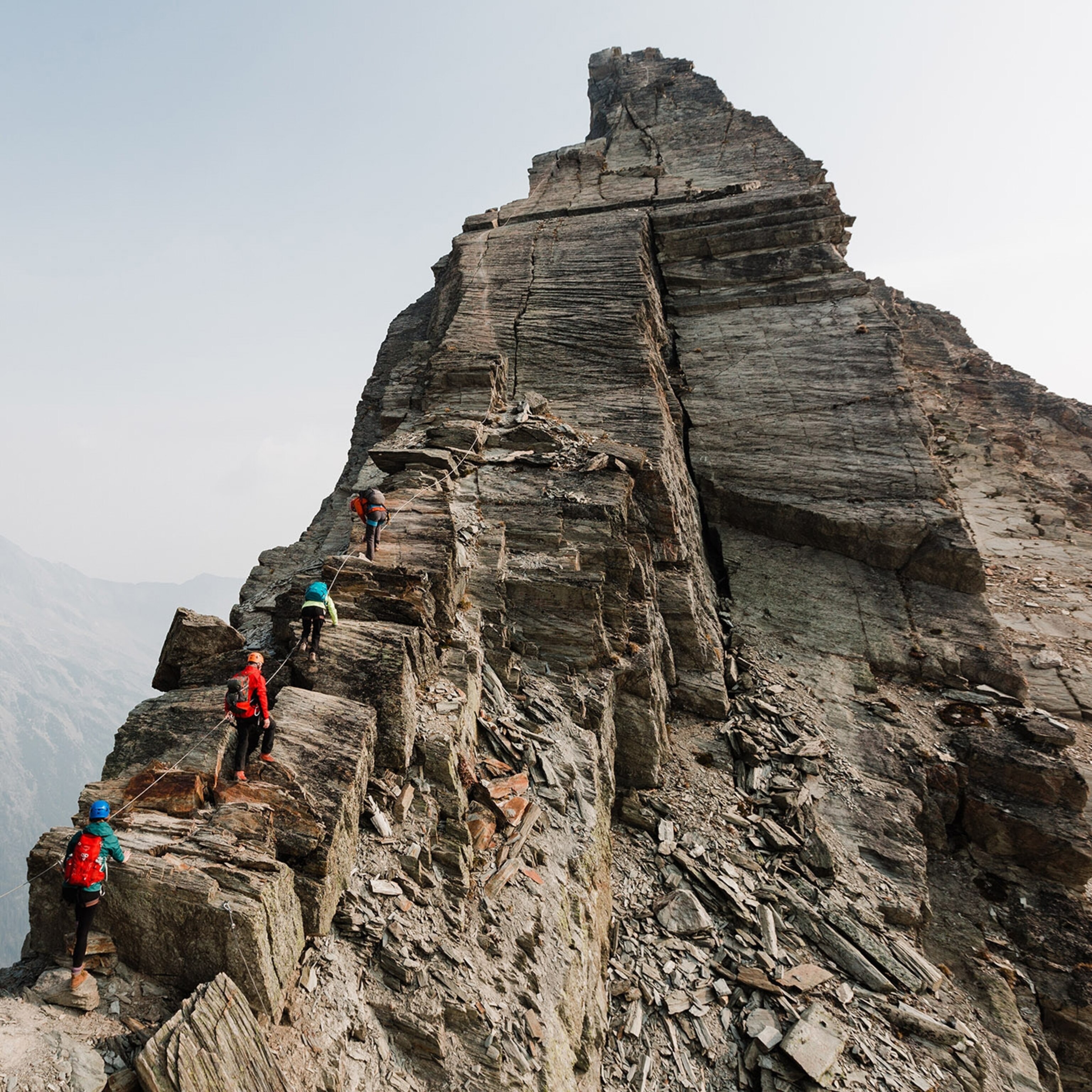
Walk into the wild with British Columbia’s first certified forest therapy guide
Experience forest therapy in British Columbia—an immersive way to reconnect with nature and boost well-being.
Canada is a big country with big landscapes, and nowhere more so than in British Columbia. Here, at the most westerly point of the country, where the ocean stretches ever-onwards to Asia, a hike is always more than just a hike.
When you pull on your boots and step into the deep greens of BC’s thriving coastal rainforest, there’s a palpable sense of release. Your shoulders loosen, your thoughts unscramble, your priorities shift. A trail unfurls ahead of you, winding through the province’s rainforest-backed shores. The day becomes about solely what you can smell, see, hear and touch: the tang of spruce, the rustle of wildlife, the balm of breeze, the rhythmic crash and pull of the ocean. And the simple reminder of what a pure, unfettered joy it is to exhale.
Walking here is elevated to an epic scale and comes in diverse forms, from globally renowned multi-day routes to short-distance rainforest day treks. Forest bathing is a popular form, slowing down and deeply absorbing the surroundings with all your senses, meditating on the details of the journey rather than rushing to the destination. In between honey-hued beaches and skyscraping mountains, there are vast coastal rainforests, where hikers can forge their way through ancient groves, picking their way over blankets of moss and crooked roots to reach lakes as still as glass.
Since 2016 when Haida Bolton became British Columbia’s first certified forest bathing guide, she has been bringing visitors under the canopy for transformational experiences near her home on the Sunshine Coast, a 112-mile stretch of shoreline known for its rainforests and hut-to-hut hiking trail. Here, she watches ravens, lies on velvety moss and leads forest bathing experiences underpinned by the idea that clearing the mind and connecting with the environment has the power to boost your physical health, reduce stress and elevate wellness. Here, we speak to her about her life and the advice she has to offer for those looking to experience the healing effects of BC’s nature.

What do BC’s rainforests mean to you?
Time in nature has always been the most precious time for me. I remember chasing frogs and catching tadpoles as a child while growing up in Nelson, in the Kootenays region of BC. I’d go huckleberry picking with my mother and I’d sit on the forest floor and stare at the miniature world of lichens and mosses. Going camping with school and connecting with nature are some of my fondest memories from childhood. Even just climbing the big butternut tree in our back garden was a source of great happiness. I’m made to live in the country.
Tell us about forest bathing.
Forest bathing is all about letting the forest’s sensory stimuli wash over you. It creates a calming effect — like taking a bath in warm water. But in this case, it’s the atmosphere doing the bathing. It slows you down, helps you connect to the forest on a sensory level so you can see, touch and hear more of the little details.
What’s your favourite walk to really immerse yourself in nature?
I get totally lost in the moment, wander around and see where I end up. One of my favourite spots is the forest at Pender Harbour. It’s incredibly lush and green, especially in the rainy season. It’s like seeing a friend – I have a deep relationship with it. Porpoise Bay Provincial Park is another favourite of mine, with its creeks and waterfalls. I wish I could wander for hours and get lost more often but life gets in the way. I love every season, too — as long as you wear the right things in winter, you can still lie on the moss.
For first timers to BC, what forest bathing experience should travellers have and why?
The first thing you should do when visiting BC is have a guided forest bathing experience. A guide can take you off the beaten track and help you to slow down and engage on a sensory level. You can’t really go wrong in BC when it comes to destinations, but the Sunshine Coast, with its creeks, waterfalls and lush foliage is hard to beat.

What are the mental benefits to spending time in nature?
There’s real science behind forest bathing. The Japanese have been studying what they call shinrin-yoku since the early 1980s. They’ve found that just two hours of forest bathing a week can help boost your immune system by 40%, and that your body will remain elevated like this for up to seven days. If you were to go for two-hour sessions three days in a row, your immune system will be heightened by 50%, remaining like this for 30 days.
How has it impacted you personally?
It’s working for me. I’ve found it incredibly empowering and healing — it’s helped me discover my most authentic self. The other benefits are decreased stress hormones, like adrenalin and cortisol, improved cognition, better mental clarity. It helps us sleep better. Forest bathing should be part of our wellness routine, just as diet and exercise are. We’ve become increasingly disconnected from nature, but it is, in fact, vital to our happiness.
Where to go forest bathing
For those who want to practice their forest bathing skills, or simply get out into the great outdoors on a hike, we’ve selected three of our favourites: a mere fraction of what’s available, but all offering an immersive West Coast experience, bringing natural beauty — and healing potential — to the fore. As ever with hikes, pack and plan appropriately and acquire any necessary park permits. The only other thing to do? Follow Haida’s advice, breathe deeply, and let BC's nature wash over you.

1. Sunshine Coast Trail
Distance: 112 miles
Terrain: Challenging, with lots of ascents and descents but plenty of peaceful woodland walking to practice forest bathing.
Two boat rides from Vancouver bring you to the site of Canada’s longest hut-to-hut hike, a glorious backcountry route that dips and climbs between areas of old-growth forest. The trail was originally conceived as a conservation initiative and has been successful in preserving some beautiful tracts of BC’s treasured coastal temperate rainforest. For blissful solitude, tackle the route north to south. It reaches its apex at the summit of the 4,278ft Mount Troubridge, from where the coastal views will soar the soul. The huts themselves are first-come, first-served (although there are also camping spots dotted along the route) and you might spot anything from bald eagles to seals. You can also fly to Powell River to hike a portion of the trail, heading south.

2. Mount Norman Trail, Gulf Islands
Distance: 1.5 miles
Terrain: A much-loved and manageable shore-to-summit climb along twisting trails.
The Gulf Islands are scattered between Vancouver Island and the mainland, offering plenty of options for walkers looking to bask in the beauty of the Canadian coastal wilderness without straying too far from the city. South Pender Island is a fine example. This ascent of the 800ft Mount Norman, the highest point on the island, winds up steep forested slopes before culminating in a stunning viewpoint across the neighbouring San Juan Islands. Wildlife is mainly feathered, flippered or finned: look out for bald eagles, belted kingfishers and blue herons, while sea lions, sea otters, (and even whales) are regularly seen offshore. There’s a direct ferry to the island from the outskirts of Vancouver.

3. Louise Dover Memorial Trail, Haida Gwaii
Distance: 2.5 miles
Terrain: A meandering, wildlife-rich forest walk, mainly under tree cover. Can get muddy.
The Haida Gwaii archipelago has no shortage of hypnotising hikes, from the tough, 55-mile East Beach Trail to the out-and-back, 13-mile Cape Fife Trail. At the shorter end of the scale, this 4-km long lush woodland trail wanders deep into the backcountry of Moresby Island, following Hans Creek as it flows through old-growth and second-growth spruce and cedar of Damaxyaa Conservancy. Unplug and be at one with the wild, keeping eyes peeled for the black-tailed deer and raccoons commonly sighted among the spruce, hemlock and cedar trees. And when spawning season arrives, returning salmon often attract black bears, so stay tuned to nature and remain in the moment (at a safe distance): a magical exercise in mindfulness.
Essentials
Getting there & around
Vancouver International Airport is the obvious arrival point from the UK, and Air Canada and British Airways fly direct to Vancouver from Heathrow. Prices start from around £467 return. British Columbia was made for road trips, so once there, it’s best to hire a car before heading out into the wilds. BC Ferries sails to almost 50 different ports of call along the coast, including the Sunshine Coast, Vancouver Island, Haida Gwaii and the Gulf Islands.
How to do it
Haida Bolton runs two-hour forest therapy sessions along British Columbia’s Sunshine Coast. Sessions can be taken on up to seven consecutive days for maximum benefit.
When to go
British Columbia is beautiful year-round. To make the most of the province's incredible natural bounty, however, come as early as spring, when forests are still green but temperatures begin to rise — making rainforest bathing a pleasant and nourishing experience.
Nature has a lasting effect on us and experts say that the bigger the nature, the better. Take a moment and connect with British Columbia's great wilderness, even before you travel. Call the Wild at HelloBC.com






